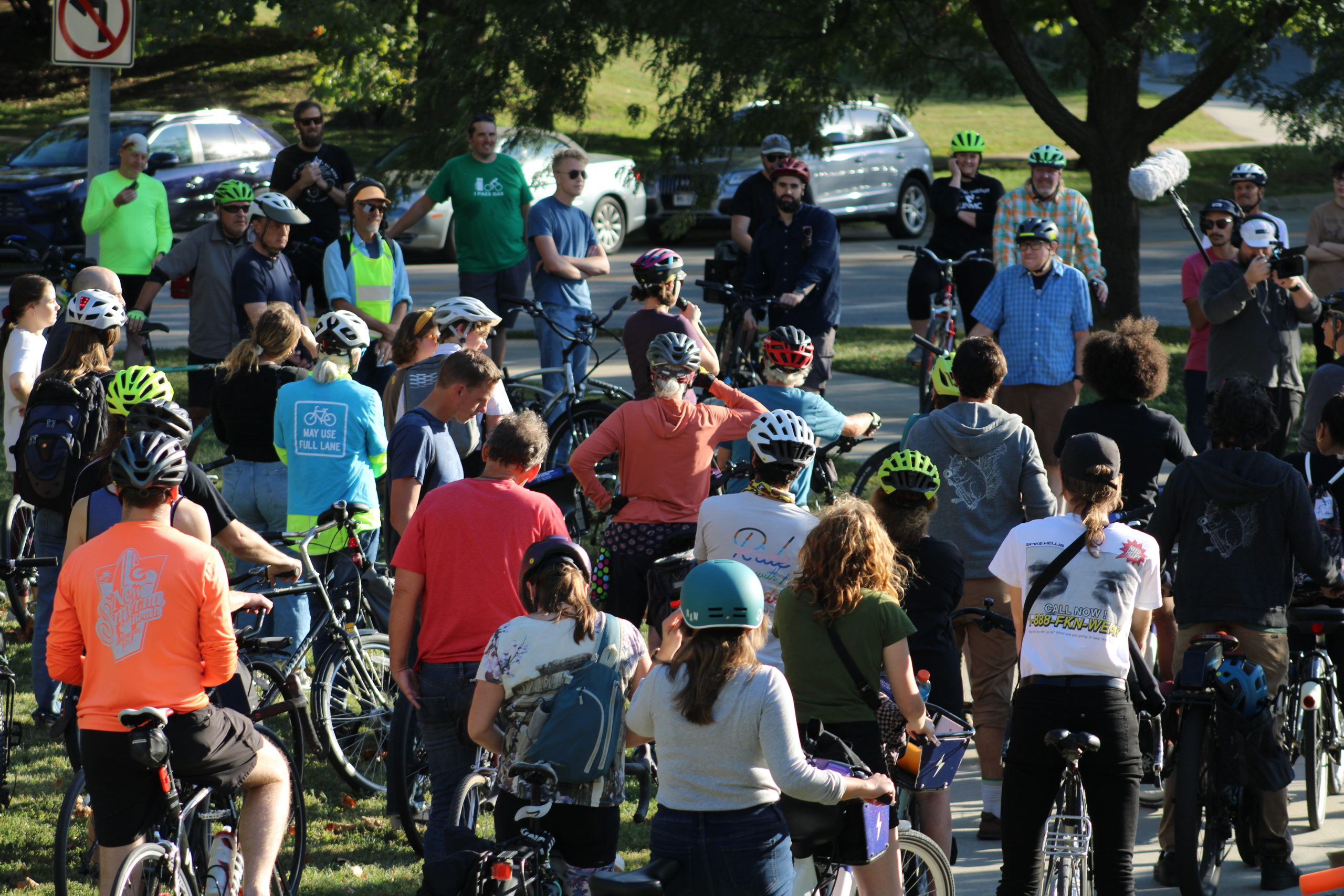It’s been a crazy few days on the city budget front with a big meeting with the Mayor on Monday and a budget resolution from Councilperson Jerram introduced on Wednesday. Here’s a quick synopsis and summary of where we stand.
Mayor Stothert, who was joined by several upper-level staff members, generously pulled together a meeting on Monday to 1) clarify her proposed plans for multimodal efforts and 2) get some feedback from the active transportation community.
The Mayor’s plans are as follows:
- Active Living Advisory Committee (ALAC)
- Deliver a Complete Streets policy in nine months
- A slightly expanded role for comprehensive transportation personnel at the Metropolitan Area Planning Agency (MAPA), with funds from the City of Omaha to assist
- A position in the Planning Department that is dedicated to multimodal transportation – a balanced transportation coordinator
The Mayor’s ALAC has already been formed by executive order. The wheels are turning, and Julie Harris will be an excellent leader. The Mayor articulated a desire to ensure the Committee is effective, and we wholeheartedly agree.
The effort to create a Complete Streets policy has been in the works for several months. Omaha by Design is convening and facilitating, and there is involvement on the Working Group from a good list of stakeholders; HDR, the Planning, Public Works, Parks & Recreation Departments, the Mayor’s Office, Douglas County Health Department, Alegent Creighton Health, and LiveWell. Their scope of work includes extracting and synching references to Complete Streets from ten other city plans (i.e., Transportation Master Plan, Environmental Element, Urban Design Handbook, Green Streets Guide) into one policy.
MAPA currently has staff that work on multimodal planning to some extent. They offered to ramp up their efforts with a regional focus but asked the City to chip in a few dollars to help make it happen. The Mayor indicated the City is on board.
There weren’t many details on the dedicated position within the Planning Department. The Mayor revealed that the City has funds available in the existing budget to pay for one additional full-time position since a City Planner position is currently vacant. The balanced transportation coordinator could be filled by a new hire, or a current employee could be shifted into the role. James Thele, Planning Director, is working on mapping it out.
Overall, we are encouraged by the Mayor’s plans. If implemented effectively, Omaha will be well ahead of where we are today. The key is execution.
Meanwhile, on Wednesday, Councilperson Chris Jerram introduced a budget resolution that adds a Complete Streets Active Living position in the Public Works Department in the second half of the 2015 budget year (following the completion of the Complete Streets policy).
We like the idea of having staff focused on multimodal transportation in both the Planning and Public Works departments. Both are important. And in our view, it’s an appropriate allocation of resources to have both.
We’ll be following the progress over the coming days and will continue to share updates on our website and via social media. The final budget deliberations and voting will occur at the August 26 City Council meeting at 2pm. See you there.
For more information and coverage, see today’s Omaha World Herald article.


Thanks for the update. In case the World-Herald doesn’t run it in the Public Pulse, here’s what I wrote in response to Matt Hansen’s ‘Forward Thinking Cities’ article on August 18th.
Matthew Hansen offers a cogent case (OWH 18-Aug-2014) for making biking, walking, and mass transit the “backbone of a forward-thinking city” and he has plenty of data to support that conclusion. Earlier this summer the Federal Highway Administration published its findings from a pilot program it launched in 2005, during the Bush Administration, to measure the impact of bike and pedestrian infrastructure investments in four communities, the closest to Omaha being Columbia, MO and Minneapolis, MN. FHA found the program increased walking trips by nearly 25% and biking by almost 50%. In the process, the four communities averted 85 million driving miles.
To put a dollars and cents number to this, researchers in Auckland, New Zealand used computer modeling to explore the economic impact of investments in various travel modes, including increasing bicycling infrastructure. They found that every $1 invested on bicycle infrastructure returned up to $24 in benefits, including reduced traffic congestion, better air quality, and improved public health.
I am still working on getting electric bicycles approved for use on bike paths, bike lanes and bike trails. If we had more of dedicated bike paths, we wouldn’t have senseless acts of violence (I refuse to call them ‘accidents’) like that on 52nd Street this week.